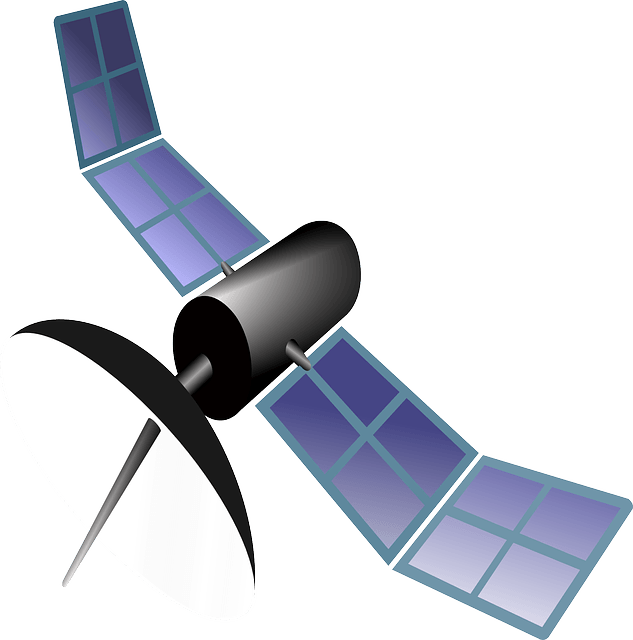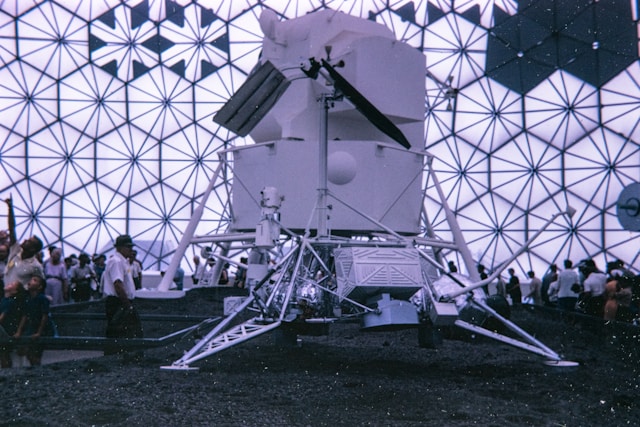Space Exploration Technologies: How Cutting-Edge Innovations Are Transforming Space Travel
Introduction: The Dawn of a New Space Age
For decades, people believed that space exploration technologies were limited to government agencies like NASA and the Russian space program. The common assumption was that only billion-dollar budgets could fund space missions, leaving little room for private industry or groundbreaking innovation.
But that belief is rapidly changing. Today, we are witnessing a new era of space travel, driven by private space companies, AI-powered space probes, reusable rocket technology, and next-gen propulsion systems. These innovations are revolutionizing space travel and bringing humanity closer than ever to deep space exploration, interplanetary travel, and even Mars colonization.
So, how exactly are cutting-edge space travel technologies transforming the future of space exploration? Let’s dive into the most exciting advancements shaping this industry.
How Space Exploration Technologies Are Changing Space Travel
Space exploration technologies are revolutionizing space travel by making it more cost-effective, efficient, and sustainable. Reusable rockets, like SpaceX’s Falcon 9, reduce launch costs, while advancements in AI, robotics, and propulsion systems enhance mission capabilities. Innovations such as 3D printing, nuclear propulsion, and space habitats pave the way for deep-space exploration and potential colonization. These breakthroughs are accelerating humanity’s reach beyond Earth, making space travel more accessible than ever before.
1. The Role of AI in Future Space Exploration Missions
Many people think that space missions are still completely human-controlled, relying on astronauts and mission control teams to make all critical decisions. However, the reality is that artificial intelligence (AI) is already running many space missions, making them more efficient, safer, and cost-effective.
AI-Powered Space Probes and Autonomous Spacecraft
AI has drastically improved how space probes and autonomous spacecraft operate. Unlike traditional missions that depend on real-time human commands, modern AI-driven planetary exploration allows robotic explorers to make independent decisions in deep space.
For example:
- NASA’s Perseverance rover on Mars uses AI to navigate rough terrain, avoiding obstacles in real-time.
- The European Space Agency’s Rosalind Franklin rover is designed to analyze the Martian surface autonomously.
- AI-powered space probes, such as NASA’s Deep Space 1, have already used AI to plan their flight paths and adjust for unexpected obstacles.
This level of automation in space missions is crucial, especially for deep space exploration, where communication delays make manual control impractical.
Machine Learning and Space Mission Automation
AI is also revolutionizing space mission automation by using machine learning algorithms to analyze vast amounts of data in real-time. This technology is:
- Improving deep space communication systems by filtering out signal noise and enhancing weak transmissions.
- Predicting space weather patterns, helping satellites and spacecraft avoid harmful solar storms.
- Enhancing planetary mapping, allowing for more detailed exploration of celestial bodies.
With continued advancements in AI-driven space robotics, future missions will become smarter, more adaptive, and fully autonomous, reducing the need for human intervention while improving mission success rates.
Next-Generation Propulsion Systems for Deep Space Missions
Many still believe that traditional chemical rockets are the only viable way to explore space. While chemical propulsion has been essential for launching spacecraft into orbit, it is no longer the most efficient or sustainable option for deep space exploration.
Reusable Rocket Technology: Lowering the Cost of Space Travel
The biggest revolution in spaceflight has been the development of reusable rocket technology, pioneered by SpaceX’s Falcon 9 and Falcon Heavy rockets. Unlike traditional rockets that burn up after one use, reusable rockets drastically lower launch costs and make space travel more accessible.
Some key advancements include:
- Landing and relaunching rockets, significantly cutting down on manufacturing costs.
- Vertical takeoff and landing (VTVL) technology, allows rockets to return safely to Earth.
- Rapid turnaround for multiple missions, increasing launch frequency and reliability.
Other companies, including Blue Origin and Rocket Lab, are also investing in reusable launch systems, pushing the boundaries of commercial space travel.
The Rise of Nuclear Propulsion for Interplanetary Travel
One of the biggest challenges in interplanetary travel is the long journey time. Traditional rockets take around 7-9 months to reach Mars, but next-generation nuclear propulsion systems could cut that time in half.
Emerging technologies include:
- Nuclear thermal propulsion (NTP): Uses a nuclear reactor to heat hydrogen, creating a faster, more efficient thrust.
- Nuclear electric propulsion (NEP): Converts nuclear energy into electricity to power high-efficiency ion thrusters.
- Fusion-based propulsion: Though still in the early stages, this futuristic technology could enable faster-than-ever interstellar travel.
NASA, DARPA, and private companies like Ultra Safe Nuclear Technologies (USNC) are already developing nuclear propulsion systems that could revolutionize deep space exploration.
Cryogenic Rocket Engines and Green Propulsion Systems
Sustainability is becoming a critical factor in space technology advancements, leading to the development of cryogenic rocket engines and green propulsion systems. These technologies aim to:
- Reduce toxic chemical waste from traditional rocket fuel.
- Use cryogenic propellants like liquid hydrogen and liquid methane for cleaner, more efficient thrust.
- Enable deep space missions to “refuel” in space by utilizing lunar or Martian ice deposits.
Companies like Blue Origin and SpaceX are already exploring methane-based rocket engines, which are not only more environmentally friendly but also ideal for refueling on Mars.
Innovations in Satellite and Space Communication Technology
Most people still believe that satellite technology is primarily used for television broadcasting and GPS navigation. However, modern space communication technology has advanced far beyond that, playing a critical role in deep space missions, global internet coverage, and planetary exploration.
The Backbone of Modern Space Exploration: Next-Gen Satellite Launch Technology
Satellites are the unsung heroes of modern space exploration technologies. Whether it’s Earth observation, interplanetary communication, or deep space navigation, satellites power nearly every aspect of space science.
Recent advancements in satellite launch technology include:
- Miniaturized satellites (CubeSats and SmallSats): These compact, cost-effective satellites are revolutionizing low Earth orbit (LEO) communication systems.
- Reusable satellite launch systems: Companies like SpaceX and Rocket Lab are pioneering ways to reuse rocket stages, drastically reducing the cost of satellite deployment.
- Hyperspectral imaging satellites: These advanced satellites provide high-resolution planetary imaging, essential for space resource exploration, climate monitoring, and military intelligence.
Deep Space Communication: Bridging the Gap Between Planets
One of the greatest challenges in deep space exploration is maintaining clear, reliable communication over vast distances. Traditional radio-based deep space communication systems struggle with long delays and signal degradation, especially for missions to Mars and beyond.
Here’s how technology is solving this issue:
- Laser-based space communication (Optical Communications): NASA and ESA are developing laser transmission systems that offer higher bandwidth and faster data transfer speeds than traditional radio waves.
- Quantum computing in space: Future quantum-powered space communication could allow for instantaneous data encryption and transmission, solving the challenge of data loss over interstellar distances.
- AI-driven signal enhancement: AI-powered algorithms help spacecraft filter out interference and strengthen weak transmissions, improving mission success rates.
With these breakthroughs, future missions will experience faster, more secure, and more efficient interplanetary communication, paving the way for human settlements on Mars and beyond.
Space Mining and Resource Utilization: The Next Frontier
For decades, the idea of space mining was dismissed as pure science fiction. Many believed that extracting resources from asteroids, the Moon, or Mars was too complex and economically unfeasible.
But that is changing rapidly. Extraterrestrial resource utilization is now seen as a key component of sustainable space exploration, reducing dependency on Earth’s finite resources and making long-duration space missions viable.
Why Space Mining Is Critical for Future Exploration
The demand for rare minerals, water ice, and other valuable resources is increasing as humans push further into space. Instead of hauling everything from Earth, scientists are working on in-situ resource utilization (ISRU)—the process of extracting and using materials directly from celestial bodies.
Key benefits of space mining technology include:
- Supporting Mars colonization plans by using local water ice for drinking water, oxygen production, and rocket fuel.
- Mining asteroids for rare-earth metals, which are crucial for advanced electronics, spacecraft manufacturing, and quantum computing in space.
- Reducing the cost of deep space missions by eliminating the need to carry excessive supplies from Earth.
How AI and Robotics Are Enabling Space Mining
Mining on Earth requires large teams of workers and heavy machinery, but in space, AI-powered space robotics are the key to success.
Current and future advancements in space robotics innovation include:
- Autonomous mining robots: NASA’s RASSOR (Regolith Advanced Surface Systems Operations Robot) is designed to dig, collect, and transport lunar soil (regolith) for processing.
- AI-powered space probes for asteroid mining: These smart probes can identify and analyze mineral-rich asteroids before human intervention is needed.
- Hyperspectral imaging satellites: These satellites can detect specific mineral compositions on celestial bodies, helping space agencies prioritize resource-rich locations.
The Future of Space Manufacturing: 3D Printing in Space
Extracting resources from asteroids or the Moon is only the first step. The ultimate goal is to use those materials for in-space manufacturing, reducing reliance on Earth-based supply chains.
The future of orbital manufacturing technology will include:
- 3D printing in space to build satellites, spacecraft components, and even habitats using asteroid-derived metals.
- On-demand spacecraft construction, allowing for in-space assembly and repairs.
- Lunar-based manufacturing hubs, using locally mined materials to build Moon bases and Mars-bound spacecraft.
With space mining technologies advancing rapidly, the dream of self-sustaining human settlements on the Moon and Mars is becoming a realistic possibility.
The Role of Private Space Companies in Advancing Space Exploration Technologies
For years, many believed that space exploration was an exclusive domain of government agencies like NASA, Roscosmos, and the European Space Agency (ESA). The common perception was that only nations with billion-dollar budgets could afford to explore space.
But today, private space companies are leading the charge in affordable space travel, reusable rocket technology, and commercial space missions. These companies are not only accelerating innovation but also making space travel more accessible for future generations.
How Private Companies Are Revolutionizing Space Travel
Private companies are revolutionizing space travel by driving innovation, reducing costs, and expanding access to space. Companies like SpaceX, Blue Origin, and Rocket Lab are developing reusable rockets, advanced propulsion systems, and commercial spaceflight services. Their competition fosters rapid technological advancements, making space exploration more efficient and affordable. Private firms have plans for lunar missions, space tourism, and Mars colonization. They are shaping the future of space travel beyond government-led programs.
SpaceX: Pioneering Reusable Rocket Technology
When Elon Musk founded SpaceX, many dismissed the idea that private companies could launch and land rockets. But today, SpaceX Falcon 9 and Starship are setting new standards for reusable spaceflight technology, reducing launch costs and increasing access to space.
Key achievements of SpaceX in space technology include:
- Reusable rockets (Falcon 9, Falcon Heavy, Starship) that drastically cut mission costs.
- Starship: The first fully reusable spacecraft, designed for interplanetary missions, including Mars colonization.
- NASA partnerships for lunar exploration, play a crucial role in the Artemis program aimed at establishing a long-term human presence on the Moon.
Blue Origin: Advancing Space Tourism and Lunar Exploration
Founded by Jeff Bezos, Blue Origin is focused on sustainable space travel and commercial space tourism. The company’s New Shepard rocket has already carried civilian astronauts to suborbital space, making spaceflight a reality for non-professional astronauts.
Blue Origin’s future goals include:
- Developing the New Glenn heavy-lift rocket for deep space missions.
- Building an orbital space station, named Orbital Reef, in partnership with Sierra Space.
- Creating a lunar lander for NASA’s Artemis program, supporting long-term lunar exploration and colonization.
Virgin Galactic and the Rise of Commercial Space Tourism
Unlike SpaceX and Blue Origin, which focus on deep space exploration, Virgin Galactic is making suborbital space tourism a reality. Using its space plane technology, the company is providing short, high-altitude spaceflights for commercial passengers.
Key milestones include:
- Successful spaceflights with private passengers, open up the possibility of affordable space tourism in the future.
- Research partnerships with NASA and other agencies to conduct microgravity experiments.
- Developing next-gen space planes for longer, more sustainable missions.
With private space companies driving innovation, the dream of interplanetary travel and commercial spaceflight is closer than ever.
The Future of Space Exploration: What’s Next?
Many assume that space exploration is simply about sending astronauts to the Moon, Mars, and beyond. But the real future of space technology lies in self-sustaining space habitats, AI-driven interstellar travel, and deep space colonization.
Building the Infrastructure for Interplanetary Colonization
Building the infrastructure for interplanetary colonization involves developing sustainable habitats, advanced propulsion systems, and resource utilization technologies. Innovations like 3D-printed habitats, nuclear propulsion, and in-situ resource utilization (ISRU) enable long-term survival on planets like Mars. Reliable transportation, life support systems, and energy solutions, such as solar and nuclear power, are crucial for sustaining human settlements. As technology advances, establishing permanent colonies beyond Earth is becoming an achievable goal.
The Role of Space Stations and Lunar Bases
The next phase of space colonization will depend on advanced space stations and sustainable lunar bases.
Some of the most ambitious projects include:
- NASA’s Lunar Gateway – A planned space station orbiting the Moon, serving as a launch point for Mars missions.
- China’s Tiangong Space Station aims to expand human presence in low Earth orbit (LEO).
- SpaceX’s Mars Base Alpha, Musk’s vision of a self-sustaining human colony on Mars by the 2030s.
Artificial Gravity and Self-Sustaining Space Habitats
Long-term space missions require artificial gravity solutions to counteract the effects of microgravity on the human body. Scientists are exploring:
- Rotational space stations (Stanford Torus design) to simulate gravity in orbit.
- Self-sustaining biodomes, which use hydroponics and AI-driven life support systems to grow food in space.
- Lunar and Martian habitat modules, designed to use in-situ resource utilization (ISRU) for survival.
Terraforming Mars: Can We Make It Habitable?
The biggest challenge for Martian colonization is the planet’s harsh environment, thin atmosphere, and freezing temperatures. Scientists are exploring:
- Greenhouse gas engineering to increase atmospheric pressure and warmth.
- Artificial magnetospheres to protect against solar radiation.
- Algae and bacterial bioengineering to produce oxygen and organic materials.
While terraforming Mars is still decades away, these innovations are setting the stage for sustainable interplanetary life.
Conclusion: The Road Ahead for Space Exploration Technologies
The belief that space travel is limited to astronauts and billionaires is becoming outdated. Space exploration technologies are evolving at an unprecedented pace, bringing humanity closer to a future where deep space missions, interplanetary travel, and space colonization are possible.
Key takeaways from this blog:
- AI-powered spacecraft and automation are making space missions more efficient and autonomous.
- Reusable rocket technology is lowering the cost of spaceflight, making space travel more accessible.
- Laser-based deep space communication and quantum computing are revolutionizing how spacecraft communicate over vast distances.
- Space mining and in-space manufacturing will allow for self-sustaining human colonies on Mars and the Moon.
- Private space companies like SpaceX, Blue Origin, and Virgin Galactic are leading the next phase of space exploration.
- Interplanetary colonization and self-sustaining space habitats are no longer science fiction—they are the future of space travel.
Final Thought: Are We Ready for a New Space Age?
With these groundbreaking advancements, the dream of becoming a multi-planetary species is closer than ever. The question is not whether we will colonize space, but when.
As technology continues to evolve, the future of human space exploration looks brighter than ever. Are you ready for the next giant leap?







